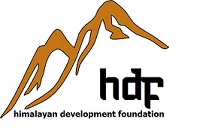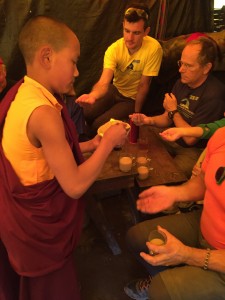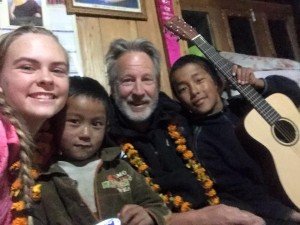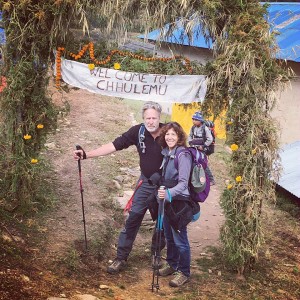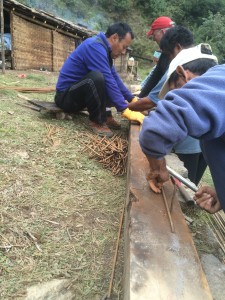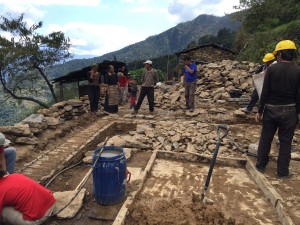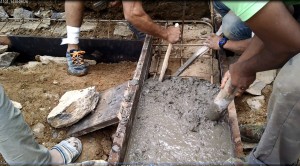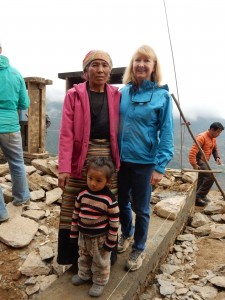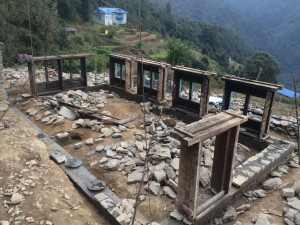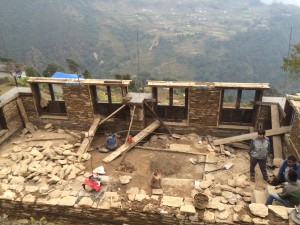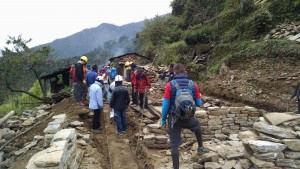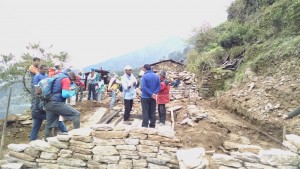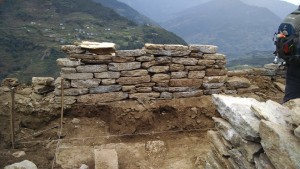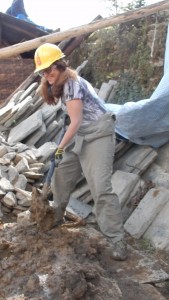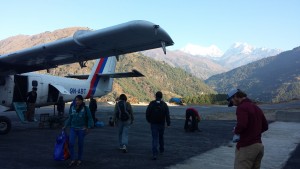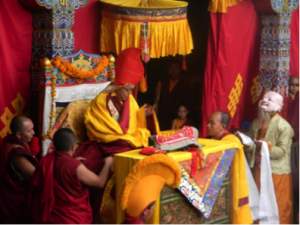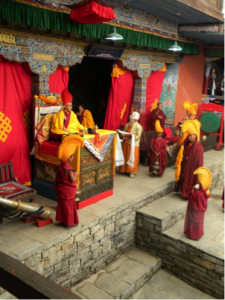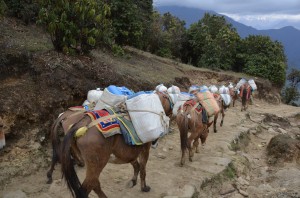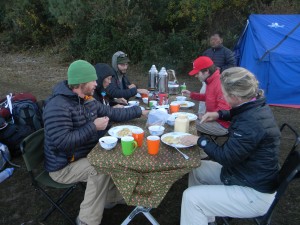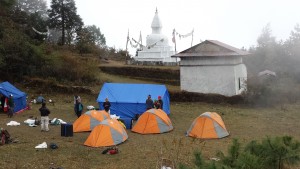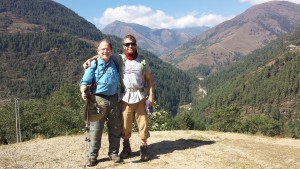We are being guided and supported by Sherpa Mountain Adventures, a trekking company owned by Karma and some of his Nepal based Sherpa brothers. They are always looking for ways to improve, but their game is first rate and we are in very good hands.
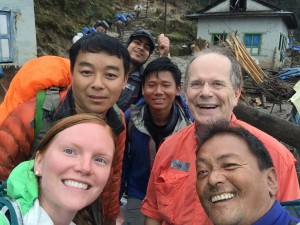
Ngima, Karma’s brother, our main guide, is supported by Chhiring, a cousin and another Chhiring, a nephew. Another brother, Ang Babu, is also one of our guides, with Krishna of no relation being our cook. The staff working with them include other Sherpas and Rai. The morning on the trail at a Ringmu teahouse, and using gray duct tape and a black marker, Edward made nametags for everyone. It was a great assist, especially for westerners learning odd spelling and pronunciation of Nepali names. I would guess it was equally helpful for them to learn our names.
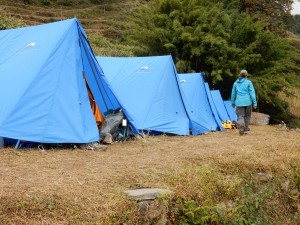
We sleep in two person tents, with SMA providing the tents and sleeping pads. Each morning at 7:00 a couple staff members will come to each tent providing our first of many daily cups of tea. Following that welcoming the staff will bring each of us a bowl of hot water to use to freshen up. Breakfast is at 7:30 and typically will consist of porridge, flat bread, eggs, and more tea.
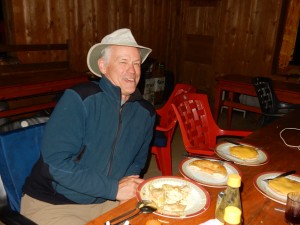
We split into two groups with Edward leading one and I lead the other. By 8:30 we are on each of the two job sites ready to work alongside the carpenters who are already working.

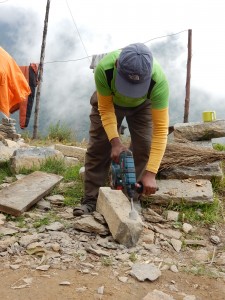
Sherpas do not eat a breakfast meal, substituting instead a brunch held at 10:00. The meal prepared for them by the homeowner most often is dal bhat, a favorite local dish of rice and lentil soup. On their plates you will find cooked greens, another vegetable, and potatoes. For drink they will have salt tea made with yak butter. The vegetarian diet, heavy in starches, follows Buddhist traditions of not harming a sentient being, plus on a practical level meat is expensive and there is no way to refrigerate it.

While they eat their brunch, a crew member will come from our camp headquartered at the Karma Sherpa family’s home and from a hot kettle will give us cups of juice for our coffee break.
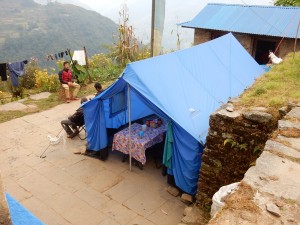
Lunchtime for us is noon and the two crews will meet back at camp. That meal may also consist of dal bhat, fresh vegetables, potatoes, coleslaw, and tea—either milk tea made with the morning’s milk (what we call chai) or black tea. As a nod to our western diet which includes meat, we will see a periodic addition of canned tuna or ham.

The afternoon takes in more work on the jobsite and ends about 5:00. On any given day shower orders will be taken and filled in one of two shower tents before a 6:30 dinner. For that the crew heats up water and loads it into a solar shower bag. It’s quite elementary, but it works and it feels so good.
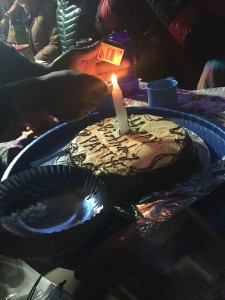
Often dinner starts with a soup course and may be followed by a noodles with mixed vegetables, a tomato sauce topping, Tibetan bread, and cauliflower. We had two birthdays occur on Trek #1 and for each of those, Krishna and his crew whipped up birthday cakes iced with birthday wishes and the name of the recipient. They added a lighted candle to the center of the cake which, in tradition, was blown out after we all sang “Happy Birthday”. On other occasions after dinner dessert included bowls of custard and an apple pie.

Time following dinner might include card games, conversation, and Edward playing and singing songs on his guitar. The villagers held parties for us on the first and last nights of our time in Chhulemu which included traditional dance, music, and as much Raksi (alcohol distilled from corn and millet) as you cared to consume.
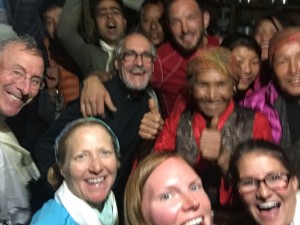
Before going to bed, the crew will have boiled water which they pour into our water bottles. By morning the next day the purified water has cooled for use that day.
It’s bedtime whenever we choose and for many of us we are nestled in our sleeping bags by 8:00. We find a long sleep to come with ease.

